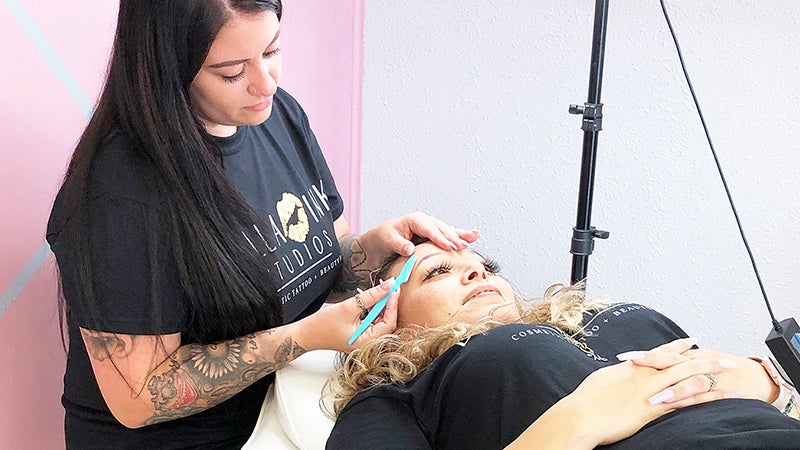The nuts and bolts of dealing with a flood-damaged vehicle
Published 5:55 pm Tuesday, September 19, 2017
The following information from the Texas Department of Motor Vehicles may be useful for the many Southeast Texans who lost or had a vehicle damaged by Hurricane Harvey floodwater:
Q: What should I do if my car sustained flood damage in Hurricane Harvey?
A: You should contact your insurance company as soon as possible.
Q: Will my insurance cover flood damage?
A: According to the Texas Department of Insurance (TDI), if you have comprehensive auto coverage, you are covered for flood damage to your car. Visit tdi.texas.gov for more details on insurance coverage.
Q: Will I need to provide my vehicle title to my insurance company? What if my title was lost or damaged in the flood?
A: Your insurance provider may request the title for your vehicle. You can obtain a certified copy of title in person at any TxDMV Regional Service Center. If you are unable to visit a TxDMV Regional Service Center, you can apply for a certified copy of title by mailing the Application for a Certified Copy of Title (Form VTR-34) to:
Texas Department of Motor Vehicles, 1601-A Southwest Parkway, Wichita Falls, TX 76302
Note: The address the certified copy of title will be mailed to must be a deliverable address. Some addresses may not be deliverable in the aftermath of the storm.
Q: How do I obtain a duplicate registration receipt for my vehicle?
A: If you need a duplicate registration/inquiry receipt, you will need to complete a Request for Duplicate Registration/Inquiry Receipt for Hurricane Harvey Impacted Vehicles (Form VTR-275-HRV). You can submit the complete form and a photo copy of your government issued photo identification to any county tax assessor-collector’s office, Texas Department of Motor Vehicles Regional Service Center, or by mail to: Texas Department of Motor Vehicles, Vehicle Titles and Registration Division, 4000 Jackson Avenue, Austin, TX 78731
Q: How do I obtain my title if there is a lien on my vehicle?
A: If you need a certified copy of title and there is a lien on the motor vehicle record, you will need to contact the lienholder to obtain a release of lien. Your insurance provider should let you know if you need to contact the lienholder.
Q: What should I do if the loss of my vehicle due to flood damage is not covered by insurance?
A: In the event the loss to your motor vehicle is not covered by insurance, there are additional steps for you to pursue. You have the option of applying for either a salvage title or a nonrepairable title, depending on the level of damage sustained. If the repair costs are more than the cash value of the vehicle immediately prior to the damage, but can be repaired, your vehicle can be considered a salvage vehicle. If your vehicle sustained significant damage and cannot be repaired, rebuilt, reconstructed, or made operable for use on a public highway, it is considered a nonrepairable motor vehicle.
Q: How can I be sure whether I need to apply for a salvage vehicle or a nonrepairable title?
A: In order to make this determination, you should obtain an appraisal of the repair cost. A salvage motor vehicle is a motor vehicle that has damage to or is missing a major component part to the extent that the cost of repairs exceeds the actual cash value of the motor vehicle immediately before the damage. A nonrepairable motor vehicle is a motor vehicle that is damaged, wrecked, or burned to the extent that the only residual value of the vehicle is as a source of parts or scrap metal. To apply for a salvage or nonrepairable title, complete the Application for a Salvage or Nonrepairable Vehicle Title (Form VTR-441), and mail it to: Texas Department of Motor Vehicles Vehicle Titles and Registration Division, ATTN: Title Control Systems, P.O. Box 26450, Austin, Texas 78755-0450
Q: Is it legal to sell a salvaged, nonrepairable or flood-damaged vehicle in Texas?
A: Yes, as long as the title properly reflects this condition so that buyer is aware.
Q: How can I avoid buying a salvage, nonrepairable or flood-damaged vehicle?
A: Do a Title Check. The Vehicle Identification Number (VIN) is run through the National Motor Vehicle Title Information System (NMVTIS), a national consumer protection database that provides title information from states across the country. Whether you are buying from a local dealer, individual or eyeing a vehicle from an online auction website, it will help you to know what you are buying before you pay any money or sign any paperwork for the vehicle. A report from the NMVTIS database gives you the vehicle’s title history, which includes whether the vehicle was ever in the possession of a junk or salvage yard or declared a “total loss” by an insurance company.
The following information is a flood inspection protocol provided by Carphoria Dealer Services for car lots:
Important update:
- In light of the recent flooding here in the Houston and surrounding area, the potential for appraising a flood damaged car is elevated over the coming weeks.
- Although most dealers are aware of what to look for, below Carphoria has compiled a list of a few things dealers may want to remind their team to check.
- Additionally, attached is a trade-in declaration dealers may want to consider having the seller sign at the time of trade and for the buyer to sign (for peace-of-mind that they aren’t buying a flood damaged unit).
Flood inspection protocol:
- Check top and underside of carpet looking for recently replaced carpet or discolored/water-marked original carpet – if new, why?
- Remove interior door panel and inspect for silt and debris inside door
- Check around seat track for sediment/rust on unfinished steel seat springs, frames and brackets
- Inspect under dash for dampness, surface rust on unfinished stamped steel brackets
- Fully extract seat belts and retractable shoulder harnesses inspecting for silt accumulation and/or water stains on belt material and/or odors
- Look for water lines on firewall, upholstery and insulation material – if new, why?
- Inspect the following for sediment build-up, small debris wedged unnaturally: undercarriage, floor-pan, frame-rails, exhaust and suspension components
- Inspect water plugs in floor & trunk – have they ever been removed…
- Close doors and windows to test for interior odors, musty smell (beware vehicle presented with windows open)
- Peel back black rubber grommet in A and B pillars and inspect for silt and flood debris
- Test for any lighting or electrical issues… dimming or flickering
- Look for standing water/fogging/condensation in head or tail lamps
- Inspect wire harness for an accumulation of silt & wire connections for corrosion and rust
- Title discrepancy/brand indicating: “flood damage” or “water damage”
- Additionally, if you are able to pull an NICB (National Insurance Crime Bureau report) to double check vs Carfax/autocheck may be helpful.





